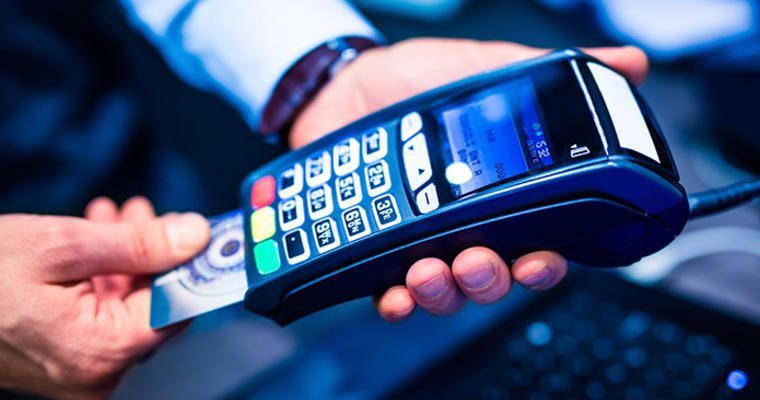The EMV is coming! The EMV is coming! You’ve heard this shout growing louder for some time now. It has become impossible to ignore. So what does the EMV conversion mean for your business? Gordon Food Service wants to guide you through the swirl of questions by examining two important points:
- Look at how much fraudulent credit card purchases cost your business each year.
- Examine whether this is the right time to upgrade your point-of-sale (POS) system.
EMV (which stands for Europay, Mastercard, and Visa) chips are starting to show up on credit/debit cards and consumers are seeing EMV readers in place of card-swipe devices at cash registers and pay stations. Restaurant operators need to decide whether to join the EMV conversion, and an important date—Oct. 1—could drive your decision.
Today, point-of-sale (POS) fraud is mostly absorbed by card issuers. After Oct. 1, restaurant operators without EMV card processing terminals will be liable for fraudulent purchases. While this sounds scary, a recent FSR Magazine article advises restaurants to weigh the risks and the options before jumping into a potentially expensive upgrade to the EMV credit card chip-and-signature system.
The good news is that you don’t have to upgrade. The bad news is that failure to upgrade means you will bear the burden of covering phony credit transactions. The urgent news is that the time to weigh the EMV system costs is now.
Because credit card fraud scams usually target large retailers (think Target in 2013 and Home Depot in 2014), the risk to a small, independent restaurants is minimal compared to larger operators—multi-units and chains.
Laura Knapp Chadwick, the National Restaurant Association’s Director of Commerce and Entrepreneurship, tells FSR Magazine that most hackers and counterfeit card users are buying high-priced retail goods they can resell for a profit. They’re not generally interested scamming a free dinner.
This doesn’t mean fraudulent purchases can’t and won’t happen to you. When they do happen, they hurt your business, making this the ideal time to weigh the two steps you can use to decide whether an EMV upgrade is right for you.
The first step is to review fraudulent purchases over the past year. If fraudulent transactions add up to more than the cost of upgrading your point-of-sale system, the financial answer is clear.
Your second step should be to contact your current POS provider or consult with your Gordon Food Service Customer Development Specialist to discuss an upgrade. Your current provider may have a solution that works for your operation. If they don’t, your CDS can work with you to find an alternate option.
Gordon Food Service offers a suite of business solutions, including POS systems that can address EMV technology.
Credit card holders already have been receiving cards with EMV chips. These cards and merchant card readers are widely used across Europe and Canada, and statistics show they are far more secure than the magnetic swipe cards used for years in the United States. As consumers become more comfortable with EMV cards and card reader technology, they may expect to see them at your restaurant—presenting value to you in two ways: protecting you from the cost of fraudulent purchases, and reassuring customers you care about their security by doing your best to protect them from identity theft.











